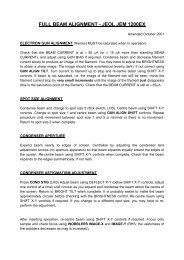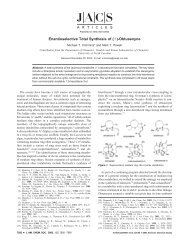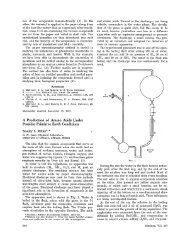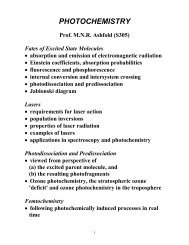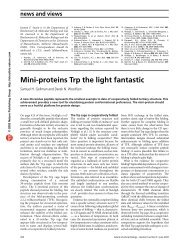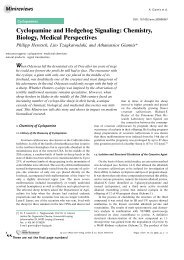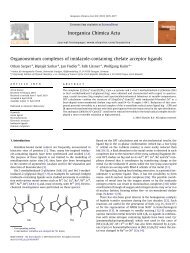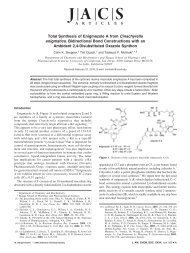Reduced Sensitivity RDX (RS-RDX) Part I: Literature Review and ...
Reduced Sensitivity RDX (RS-RDX) Part I: Literature Review and ...
Reduced Sensitivity RDX (RS-RDX) Part I: Literature Review and ...
Create successful ePaper yourself
Turn your PDF publications into a flip-book with our unique Google optimized e-Paper software.
3.1 <strong>RDX</strong> Comparison<br />
3.1.1 <strong>RDX</strong> Samples<br />
DSTO-TR-1447<br />
Six different batches (table 1) of <strong>RDX</strong> were used in this project. Two batches of ADI<br />
Grade A <strong>RDX</strong> from different facilities were examined, primarily to enable comparison<br />
between previous research <strong>and</strong> current projects. Type II <strong>RDX</strong> from Dyno Nobel was<br />
selected as being representative of a conventional ‘non-insensitive’ <strong>RDX</strong> grade. The<br />
class 5 (fine) <strong>RDX</strong> from Royal Ordnance was used in the cast-cured PBX formulations<br />
to enhance processability. ADI Grade B <strong>RDX</strong> was used to provide results from a<br />
different grade of Type I <strong>RDX</strong> that was expected not to be a <strong>RS</strong>-<strong>RDX</strong>.<br />
Table 1. Source <strong>and</strong> type of <strong>RDX</strong><br />
3.1.2 SEM Imaging<br />
Manufacturer Description Lot no.<br />
Dyno Nobel<br />
Type II, Class 1<br />
DDP01J001-042<br />
SNPE<br />
I-<strong>RDX</strong><br />
0719S00<br />
ADI (Albion)<br />
Type I, Grade A, Class 1<br />
R634<br />
ADI (Mulwala)<br />
Type I, Grade A, Class 1<br />
11852A<br />
ADI (Albion)<br />
Type I, Grade B<br />
B/B3963<br />
RO, Bridgwater<br />
Type I, Class 5<br />
1659<br />
Examination by scanning electron microscopy (SEM) of the six <strong>RDX</strong> variants listed in<br />
Table 1 shows some distinct differences (figs. 1-6). Numerous fine particles are present<br />
amongst the larger grains of the two European products. Generally, the SNPE <strong>and</strong> ADI<br />
Grade A <strong>RDX</strong> particles are more rounded than that of Dyno Nobel indicating that the<br />
ADI <strong>and</strong> SNPE materials have been recrystallised whereas the Dyno Nobel has not.<br />
The ADI Grade B <strong>RDX</strong> has very irregular morphology <strong>and</strong> a wide range of particle<br />
sizes, consistent with a milled sample.<br />
5



